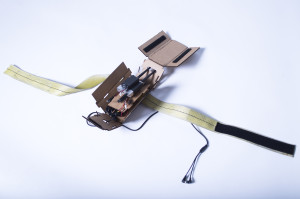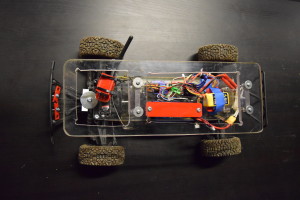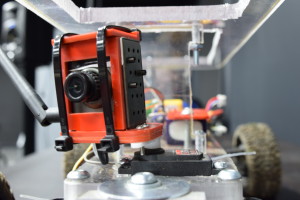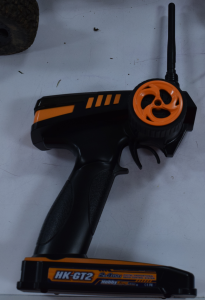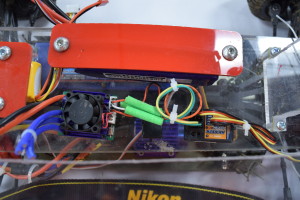Wearable Game Design: Journey Car
|
By: Roberto Andaya and Steven Ji YouTube / Michelle Ma – via Iframely Journey car is a controllable RC car game in which two players come together with the objective of knocking down beacons located throughout a specified course. One player drives the vehicle while the other player controls the wireless camera view. Both players view the same wireless camera feed and communicate with each other to knock the beacons down. The general idea is based on the popular Playstation Video game, “Journey”, in which two players work together to reach the mountain. In the video game, there is no formal communication except for cryptic noises. From this game idea, we were inspired to give players an experience of not being able to physically see each other and be looking out from the perspective of the car. Here is the car system:
The Journey Car is a wearable gear in the sense that the person has the entire control systems on their person. Everything is packaged and powered by batteries. We made sure to make this experience as ready to go as possible so that people can pick up and play. Steven Ji was in charge of creating this packaging system by studying how google cardboard systems were created. He went through half a dozen iterations to reach this finalized design. The wearable gear contains batteries to power the receiver for the wireless camera and also powering the Fatshark goggles. Fatshark goggles are an instrument that allow the user to see video from the wireless camera. Below are videos that show the packaged system in action. Here are how the mobile viewer and control systems function: YouTube / Chia Chi – via Iframely YouTube / Jenna Choo – via Iframely Below is a picture of the car system with the wireless camera mounted onto the front. Roberto Andaya was in charge of making sure the car system worked and was thoroughly constructed to a certain strength. The camera mount is laser cut acrylic that is specifically designed to be attached to the servo underneath it such that it is secure and able to rotate. A problem with the initial designs was the sheer amount of force created by the RC car system. Cardboard as a whole would not do and neither would Acrylic. We created a polycarbonate base and top system that about 20 times stronger than Acrylic. The base system was to ensure the system was held together. After some experience with the vehicle we also found that the RC car could tip over so a top piece was added to protect the equipment. Below is the 2.4 GHz radio controller system that was used to control the RC vehicle and the Camera servo to turn it. This system consists of a HK-GT2 controller sending a signal to the receiver unit called a HK-GT2b which sends the commands to the controlling units. Feedback: During our first prototype presentation other members of the class were excited for the project but their main issue was that it felt too limited to its environment. We had been set on an idea of the RC car solving an indoor puzzle but the class was more interested in going the maximum speed that the RC car could go. With a room so small for presenting max speed was not possible. After that we decided on creating an outdoors speed game.
|



